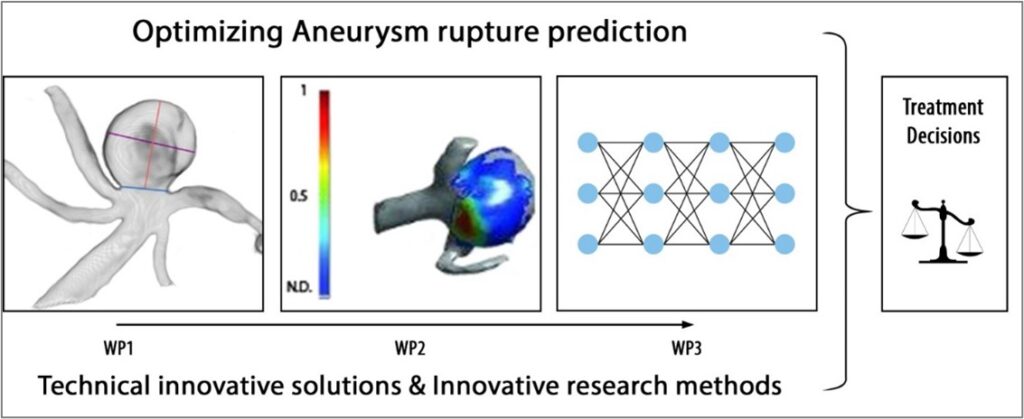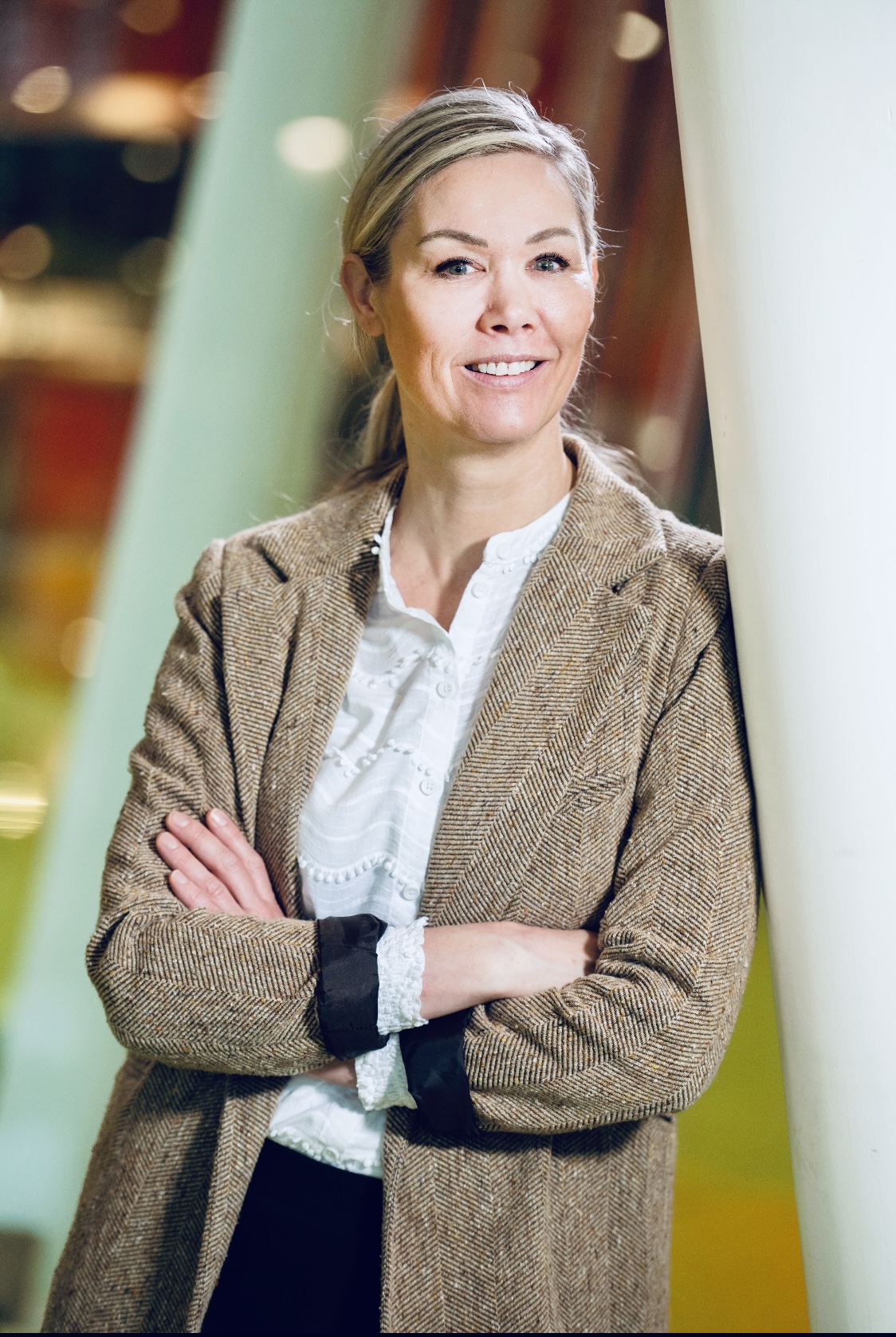When an aneurysm ruptures, it can cause a severe stroke or even be fatal. Researchers are using artificial intelligence to develop personalized models for predicting aneurysm rupture risk and identifying lifestyle factors that contribute to this risk.
An intracranial aneurysm (IA) is a dilatation of the the brain’s blood vessels with risk of rupture, resulting in an aneurysmal subarachnoid hemorrhage (aSAH). The prognoses is poor with a mortality rate of 35 percent. Timely treatment, by endovascular or neurosurgical approach, can prevent aneurysm rupture, but is only performed in high risk of rupture.
Prediction
“One of the biggest challenges in treating aneurysms is determining which aneurysms are at high risk of rupture,” says Irene van der Schaaf, Professor of Neurovascular Interventional Radiology at UMC Utrecht. “This uncertainty makes clinical decision-making difficult.” Research has shown that the shape and structure of an aneurysm—its morphology—can be an important predictor of rupture risk. Traditionally, doctors analyze aneurysm morphology using manual measurements on CT scans, but subtle changes can be easily overlooked.

Deep learning
Advanced representations of aneurysms allow for better analysis of aneurysm morphology. This is where AI comes in. Van der Schaaf explains, “In collaboration with TU/e, we are developing a deep learning model that can analyze aneurysm morphology more accurately. Using a database of a thousand patients from UMC Utrecht, this model aims to improve the prediction of aneurysm rupture risk.”

“Personalized predictions and lifestyle advice contribute to personalized care—providing treatment when needed, adopting a watchful waiting approach when possible, and preventing unnecessary healthcare costs”
Prevention
Beyond predicting rupture risk, the research also focuses on prevention by identifying lifestyle-related risk factors. “This part of the project benefits greatly from the contributions of our vascular neurology department, led by Prof. Ynte Ruigrok,” says Van der Schaaf. “We know that smoking, high blood pressure, and excessive alcohol consumption increase the likelihood of aneurysm formation and rupture. However, the role of diet and nutrition is not yet fully understood.”
Life-style and diet
To address this gap, the researchers are conducting a literature review to evaluate existing knowledge. This will help them to select the variables to be included in the machine learning model. Following this, they plan to analyze data from the UK biobank, a large-scale medical database containing health information from approximately 500,000 patients, including extensive data on lifestyle, nutrition, DNA, and cardiovascular risk factors. By applying AI-driven analysis to this dataset, the team hopes to uncover key lifestyle and dietary factors that influence aneurysm rupture risk. This research is carried out in collaboration with the Nutrition and Cardiovascular Disease group at Wageningen University & Research (WUR).
Personalized care
By combining personalized risk prediction with tailored lifestyle advice, the project contributes to a shift in aneurysm treatment, Van der Schaaf explains. “Rather than treating all IA patients with invasive procedures, the goal is to offer personalized care—operating only on patients at high risk while adopting a watchful waiting approach for those at low risk.” The research team is also working on engaging patients in their own care by helping them make informed lifestyle changes that can reduce their risk of aneurysm rupture. To support this, they have developed multimedia information for thuisarts.nl.
Closing the loop
For AI to make a real impact, technological advancements must be successfully integrated into clinical practice. “The strength of this project lies in its multidisciplinary approach within the alliance,” says Van der Schaaf. “By closing the loop between AI development and real-world healthcare applications, this initiative has the potential to make a significant medical and societal impact.”
About the project
Project titel: X plAIn-me Please. Explainable AI and Patient Participation in Prediction and Prevention of aneurysm rupture.
Team: Irene van der Schaaf, Ynte Ruigrok, Hugo Kuijf, Birgitta Velthuis (UMCU), Marianne Geleijnse (WUR), Remco Duits (TU/e), Marieke van der Schaaf (UU).